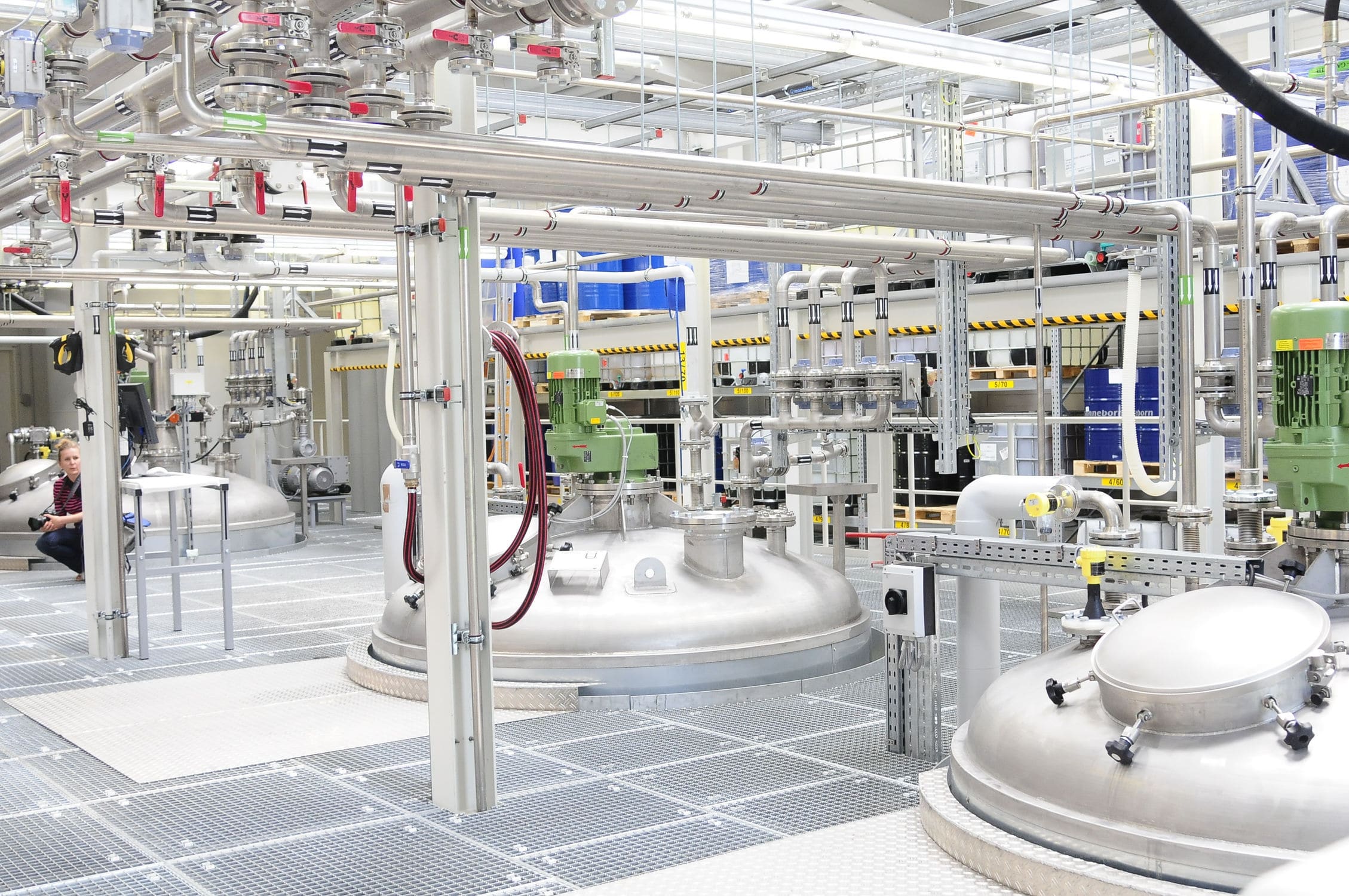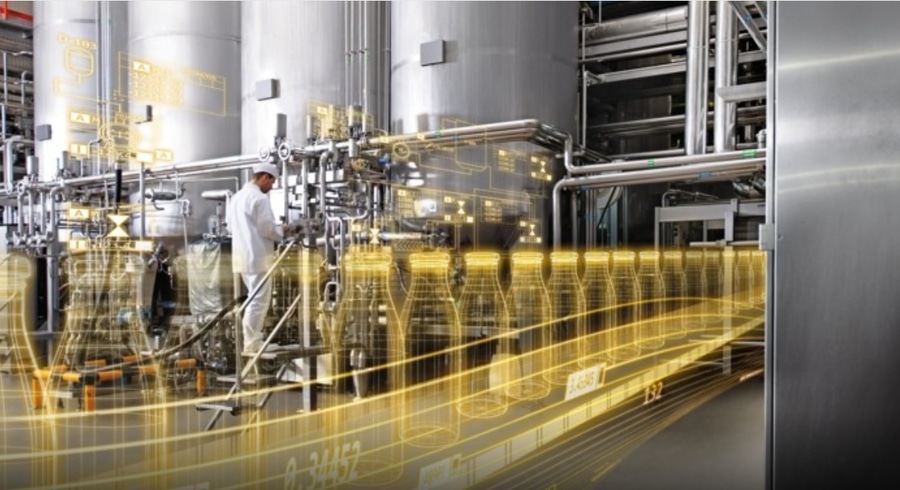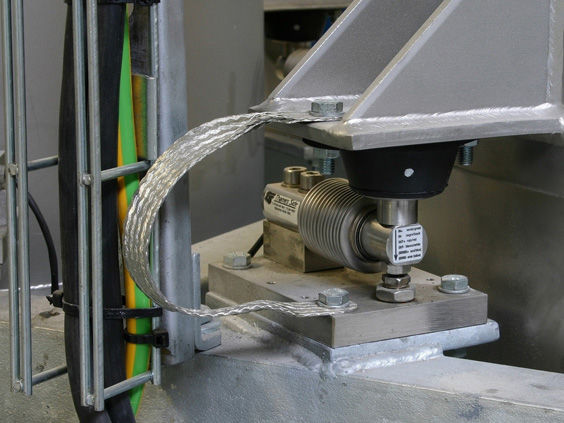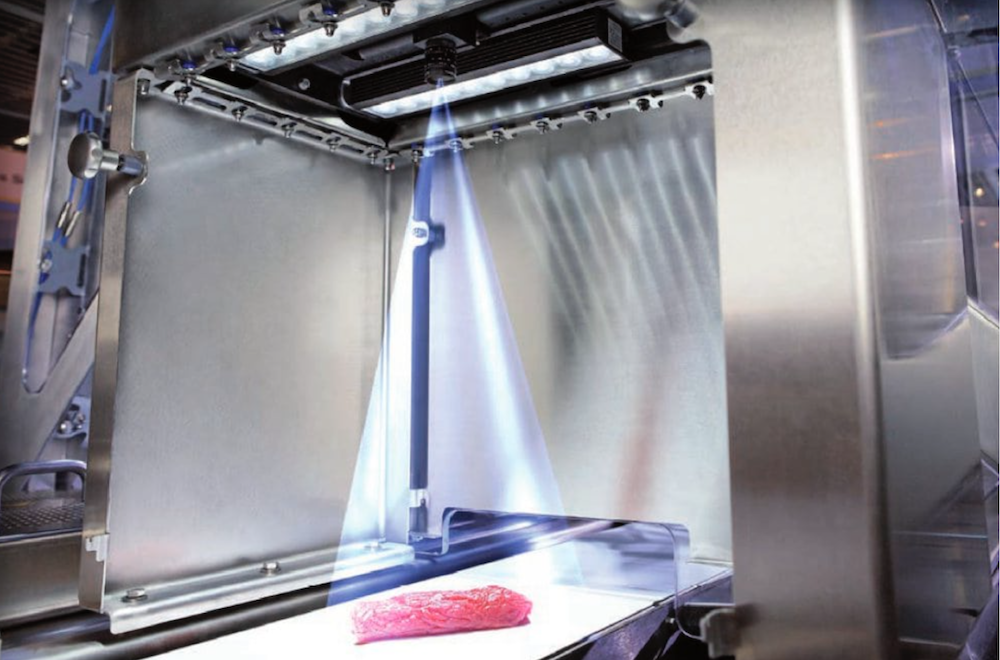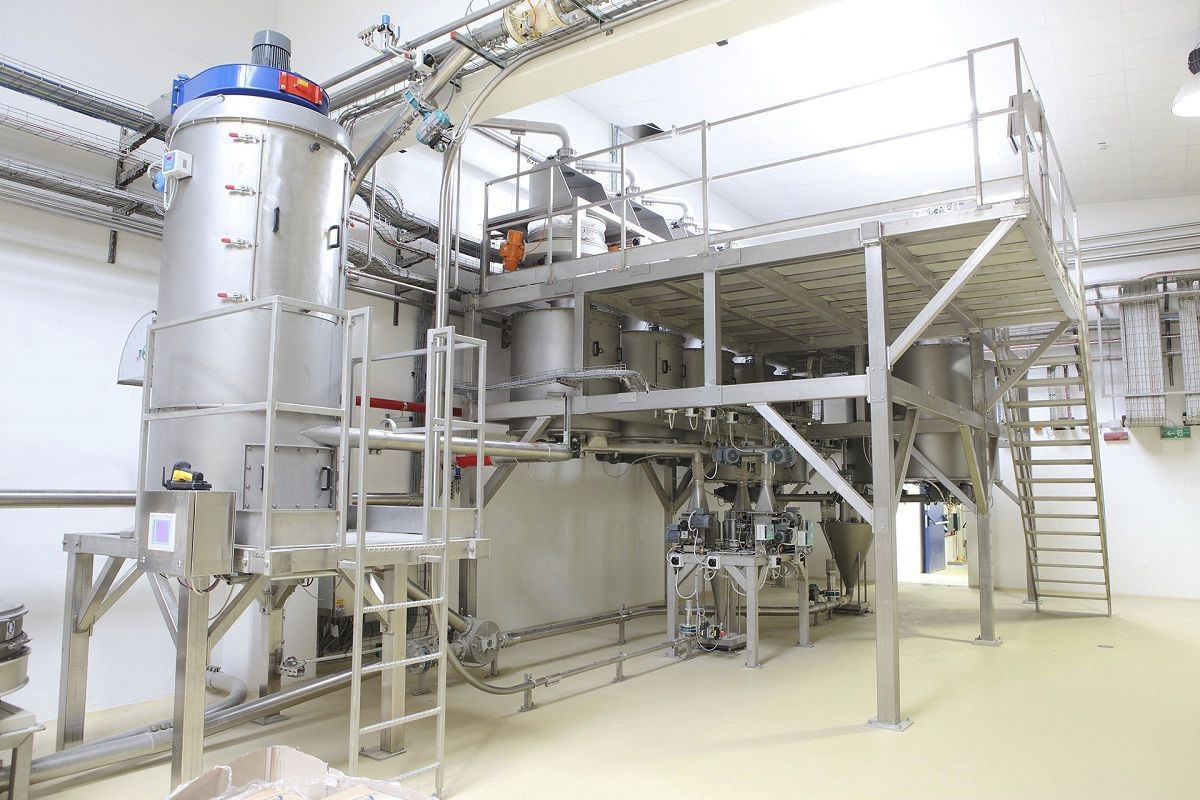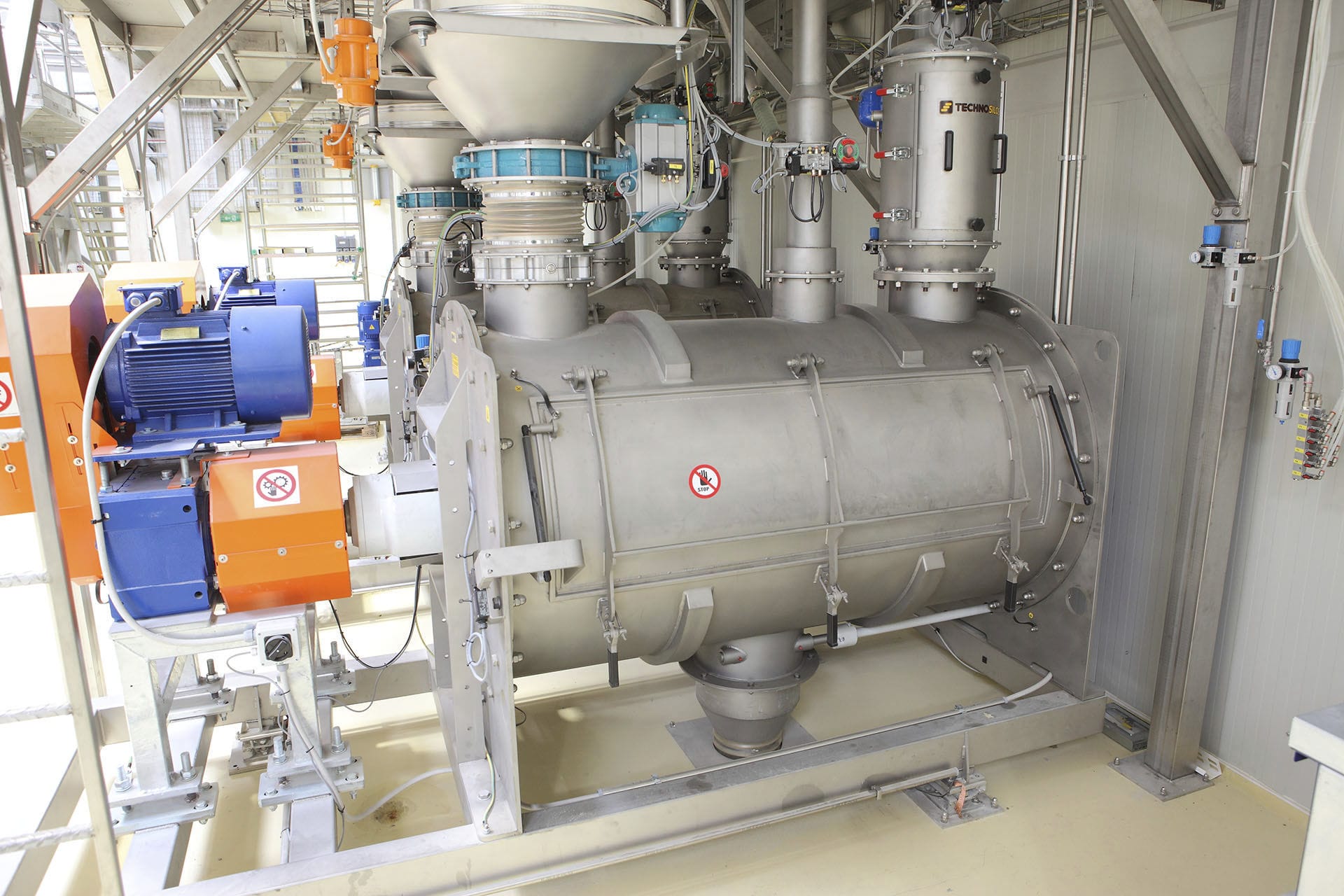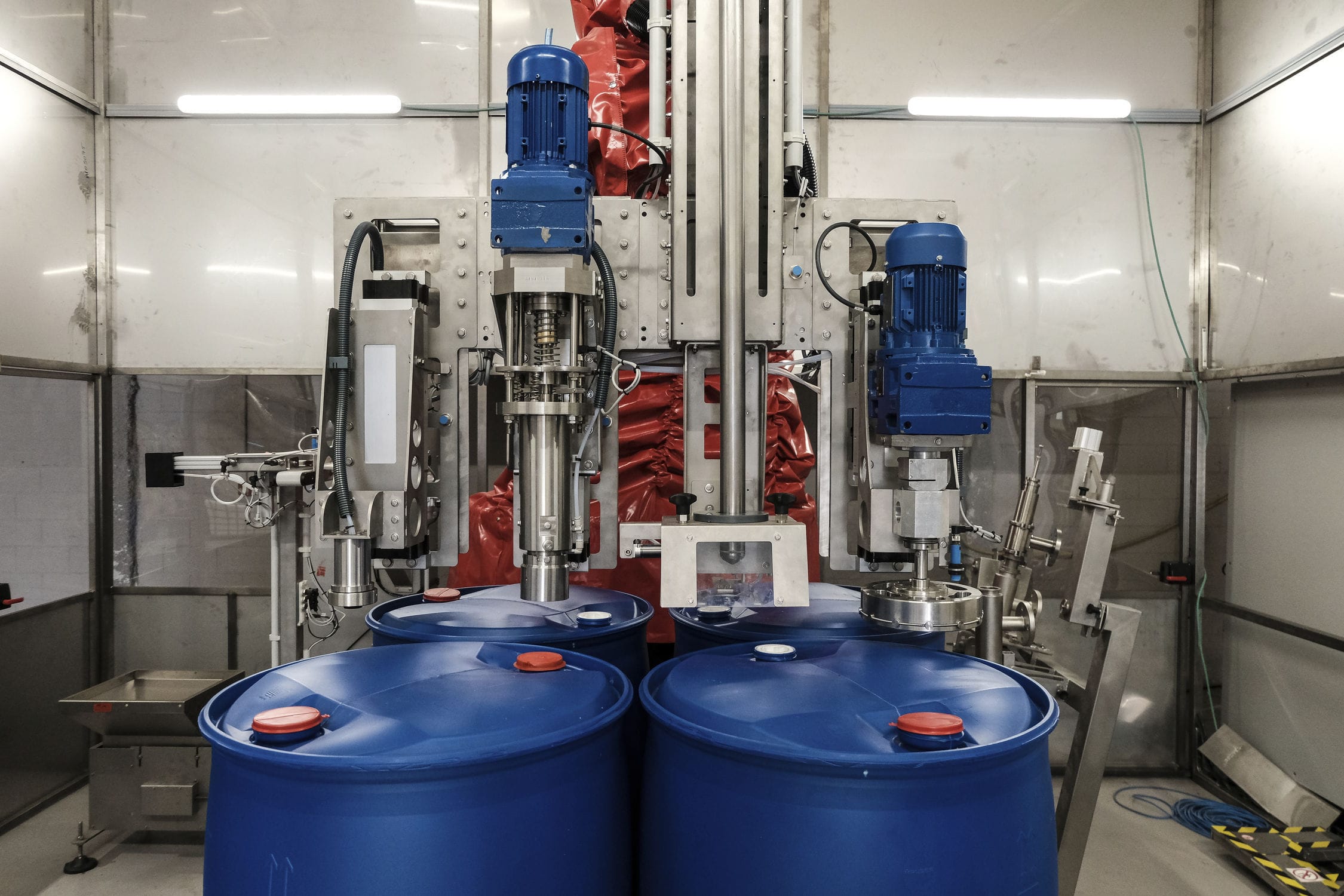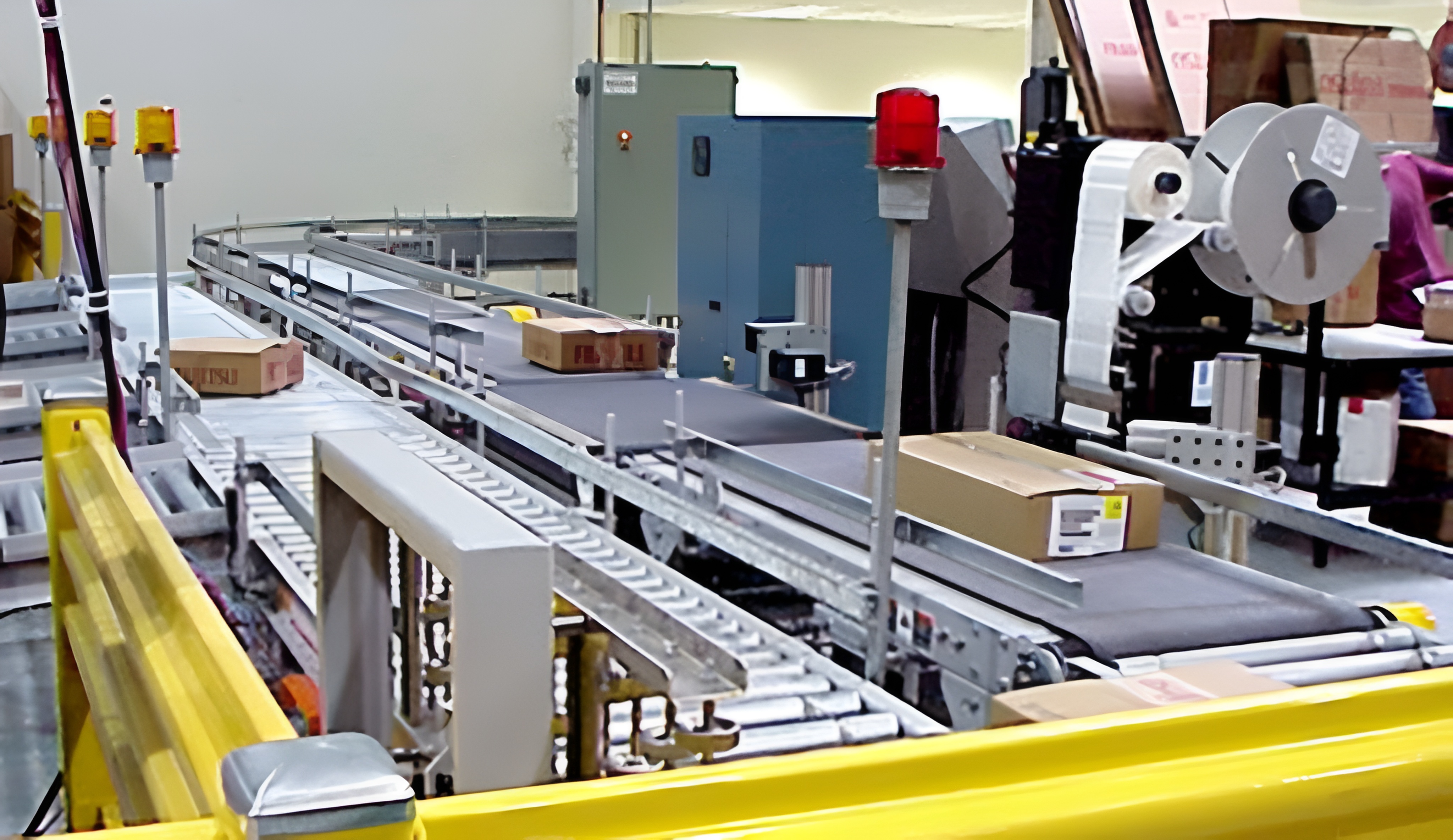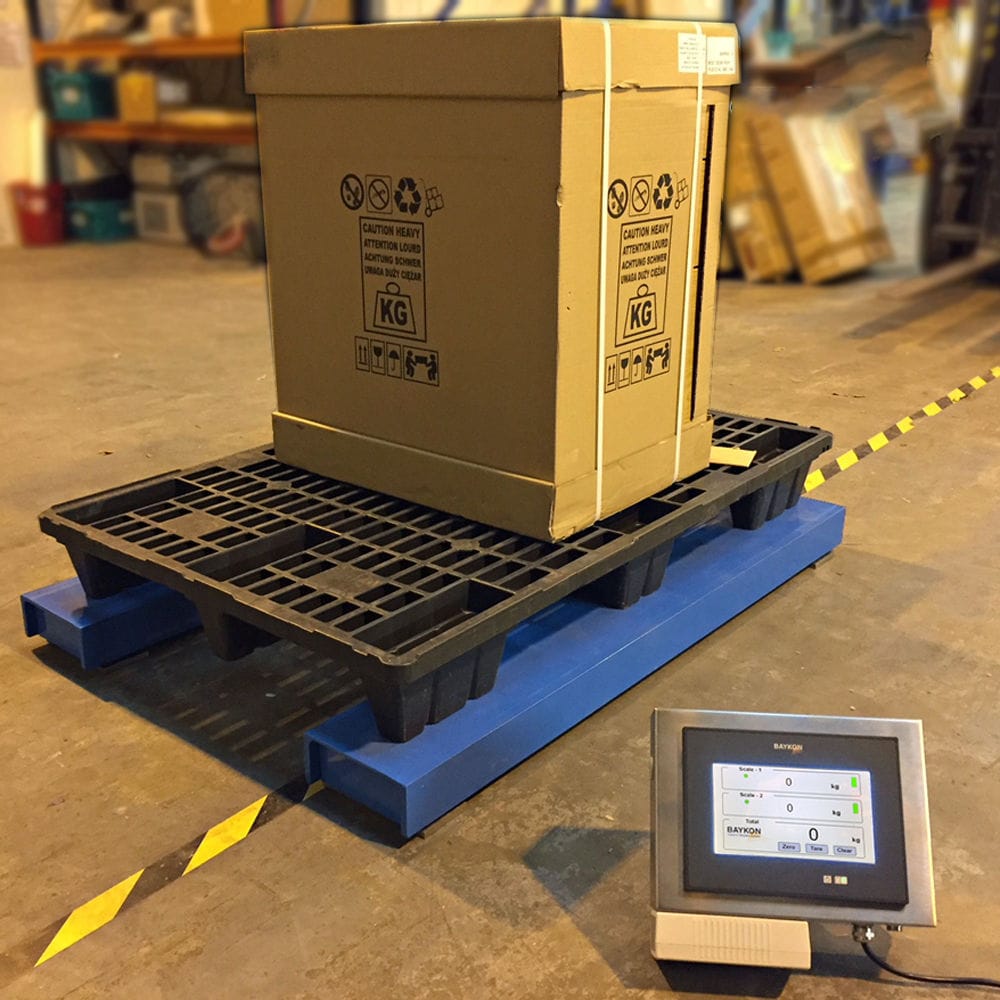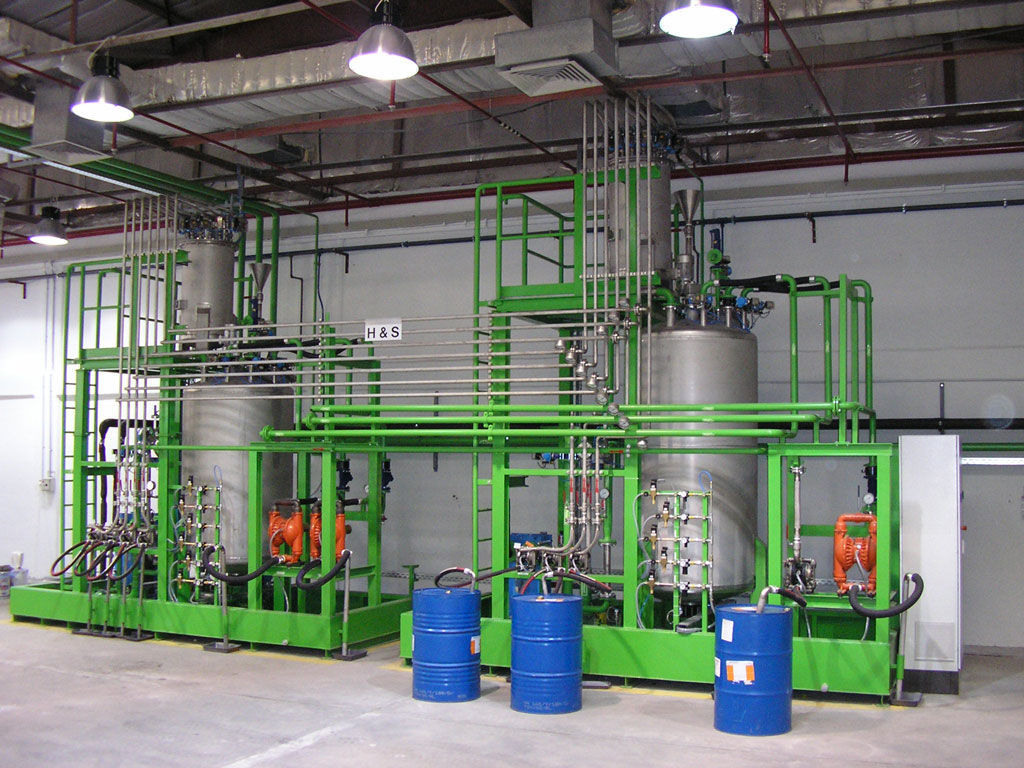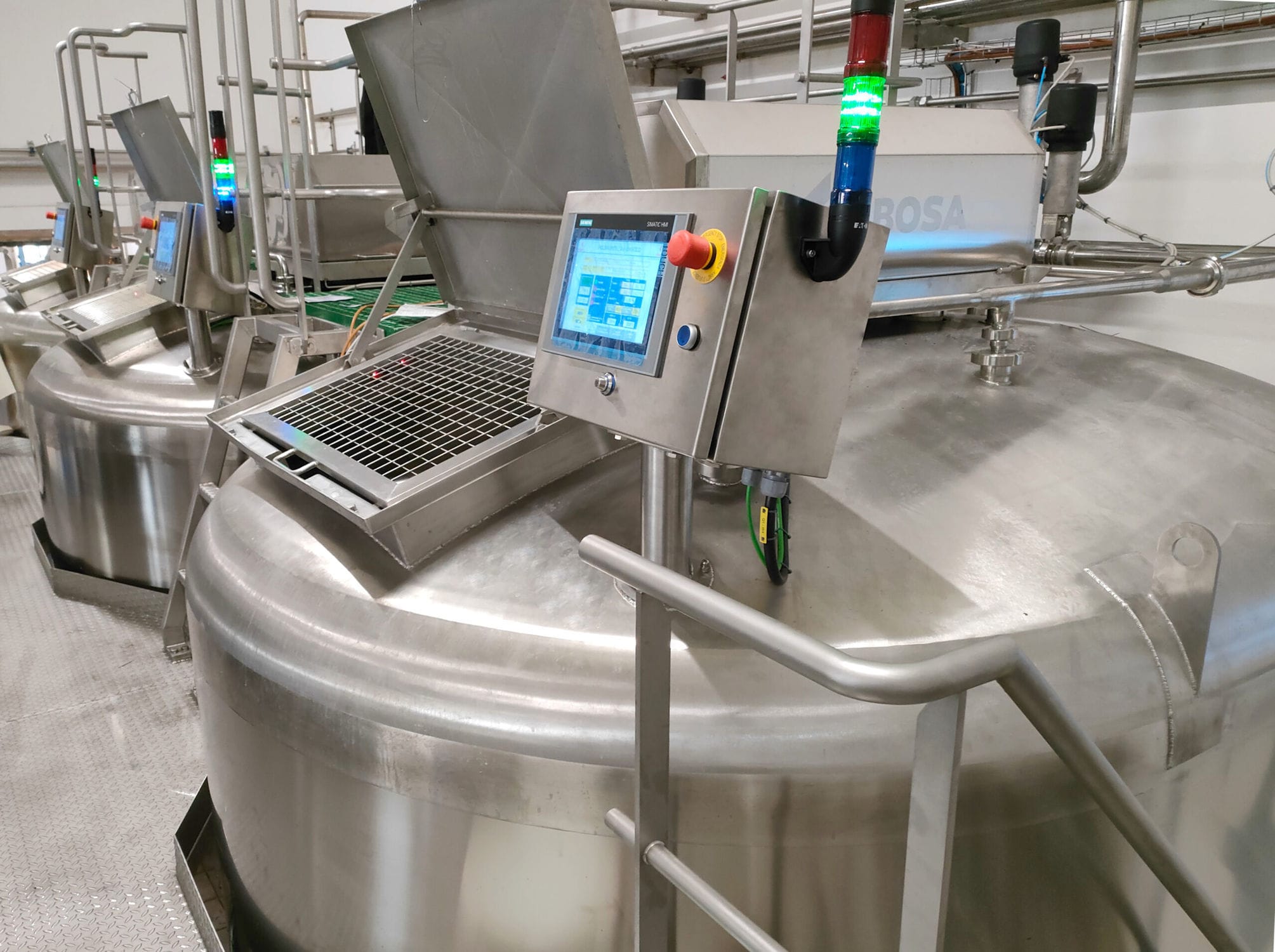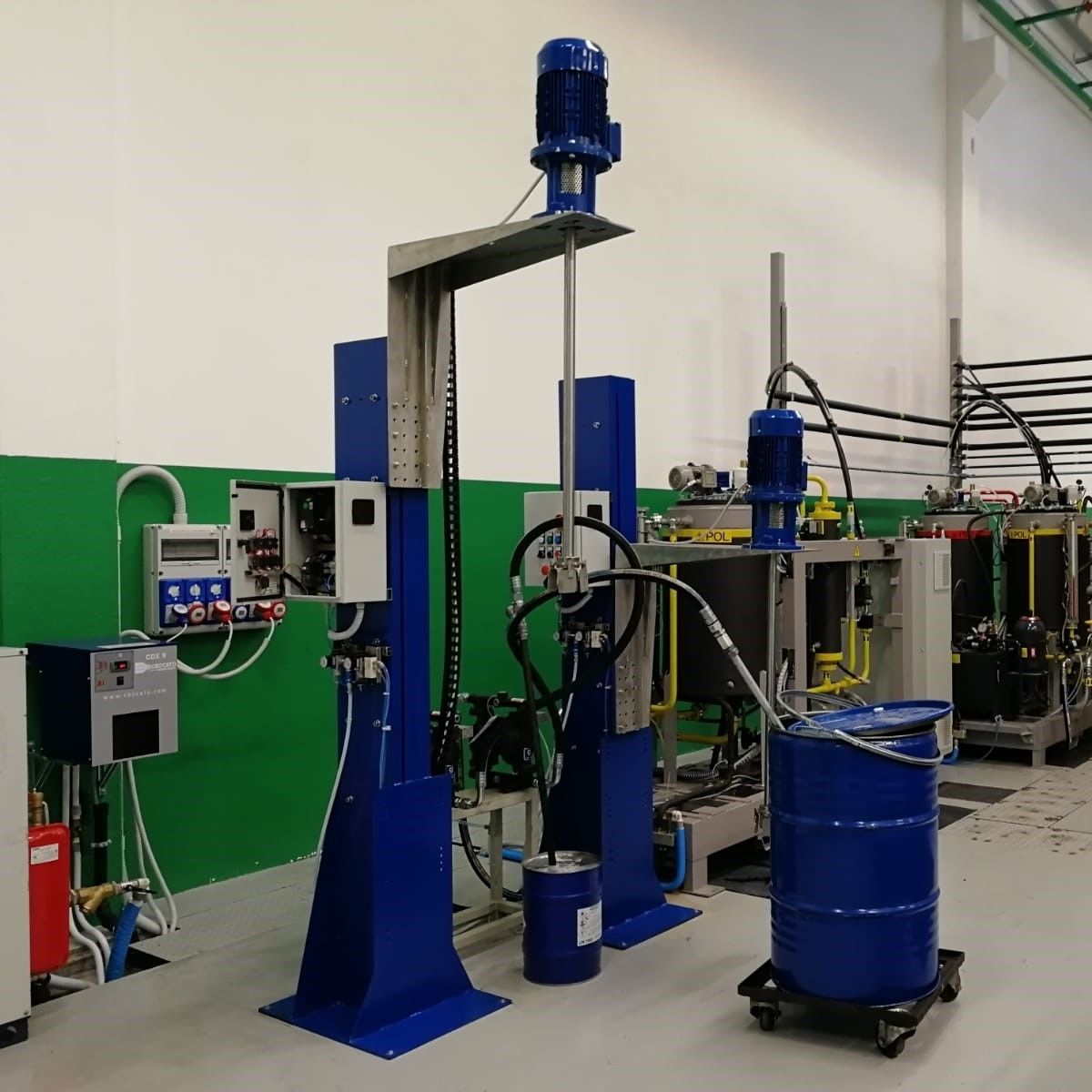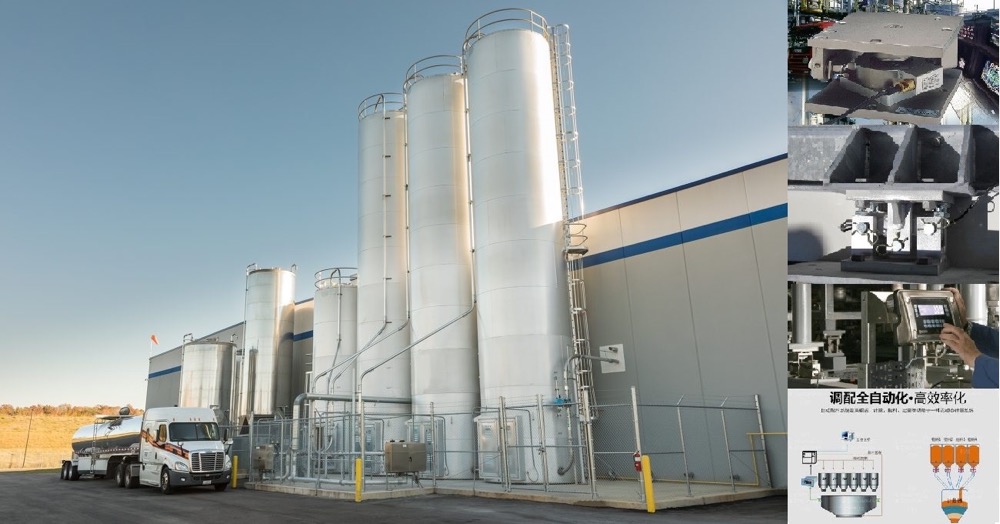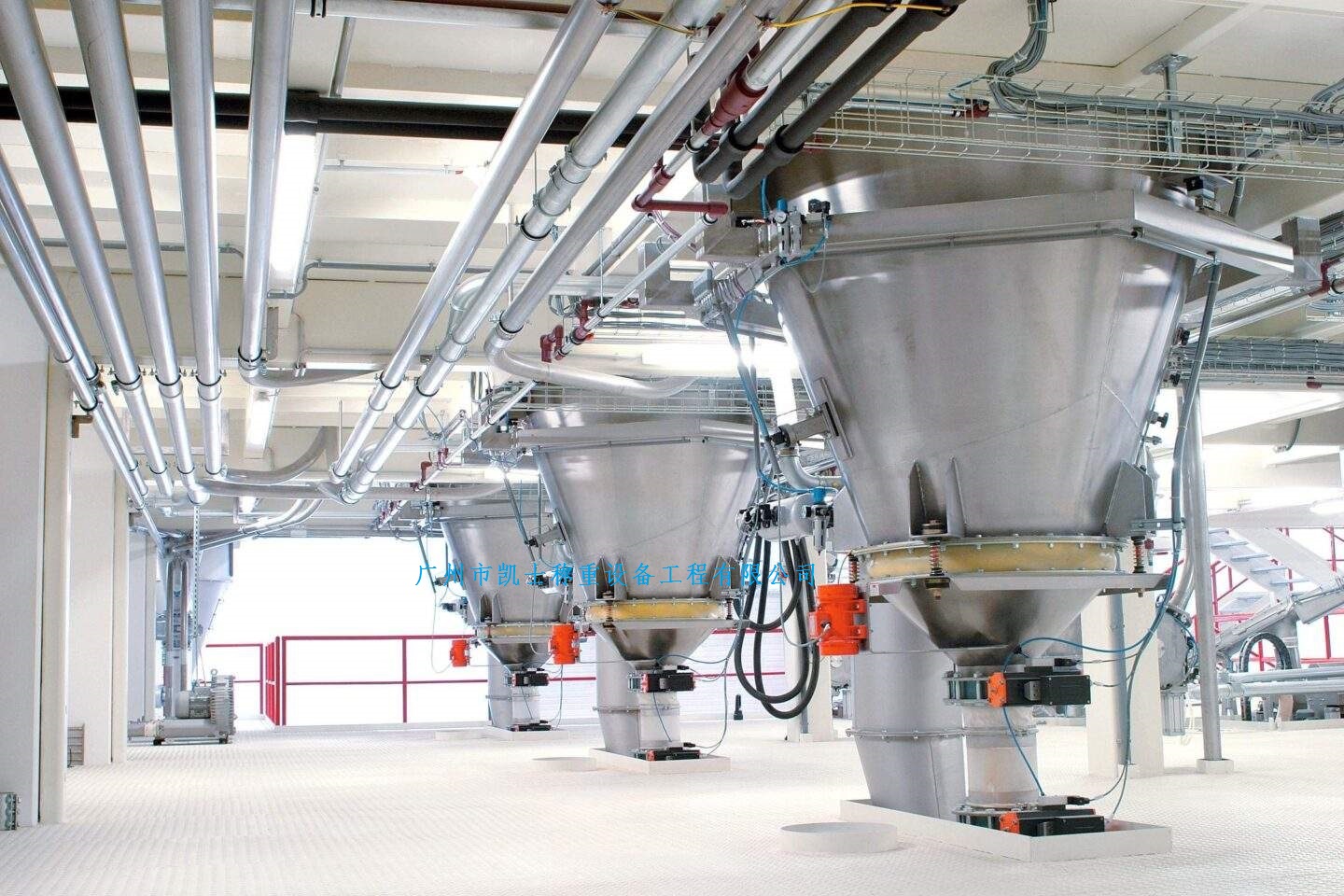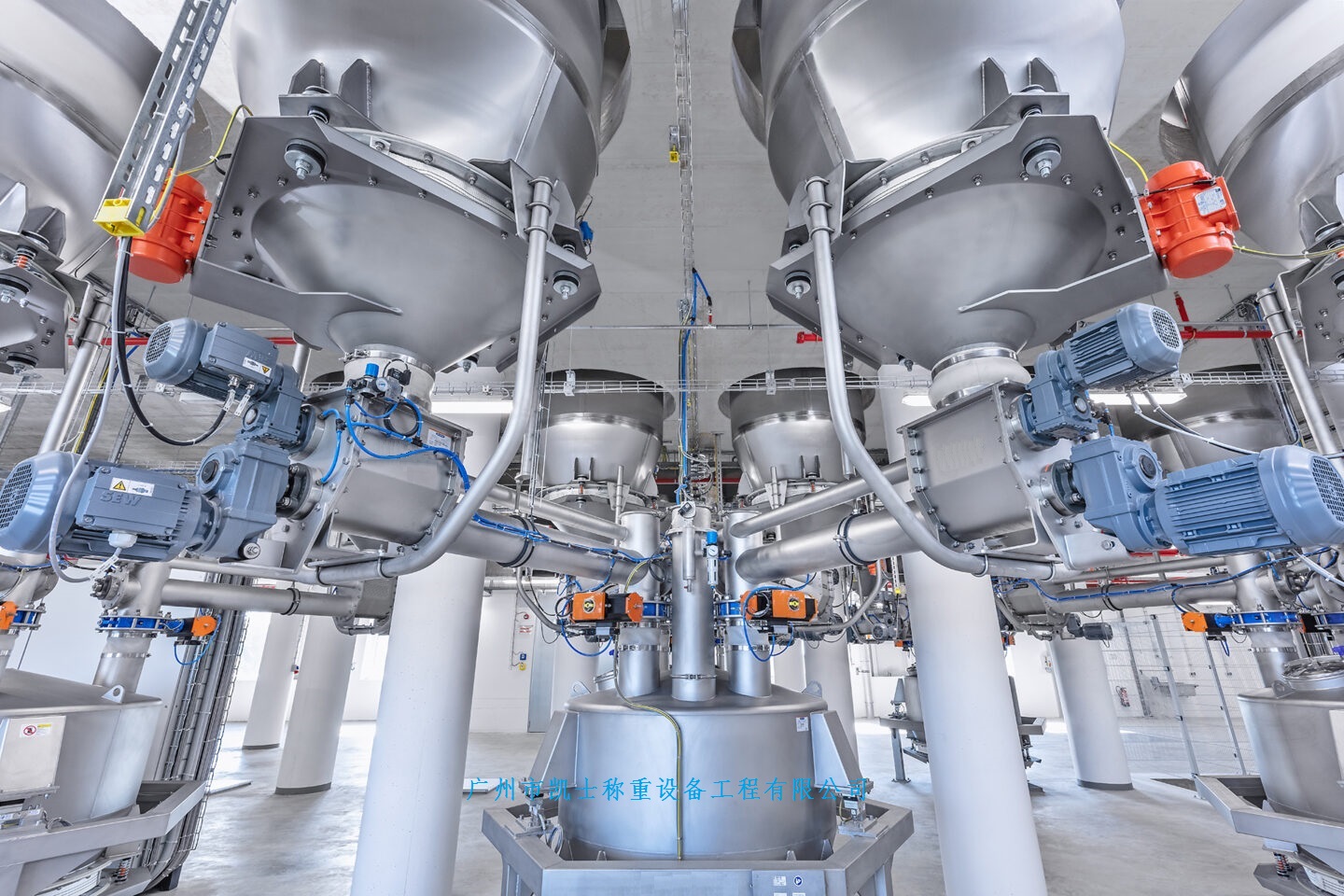

When the weighing tank system adopts the feeding type weighing, due to the influence of the drop, after the feeding stops, it freely falls into the weighing hopper in the air. To ensure the accuracy of batching, the lead time for stopping feeding should be controlled to minimize the impact of the drop on the batching accuracy and keep the actual batching value within the error range.
 020-34563445
020-34563445The weighing tank system is mainly composed of the agitator tank body, agitator tank cover, agitator, weighing module, weighing instrument, transmission device, shaft sealing device, etc. The software part mainly includes the control algorithm of the programmable controller and the monitoring program of the upper industrial control computer.
In the industrial batching process, there are two commonly used weighing methods, namely feed weighing and discharge weighing. At the beginning of the weighing, materials are fed into the weighing hopper through the feeding equipment. When the weighing value reaches the set value, the feeding stops, and then the gate is opened to discharge the materials.
When feeding weighing is adopted, due to the influence of the drop, after the feeding stops, some materials still fall freely into the weighing hopper in the air. To ensure the accuracy of batching, it is necessary to design a control algorithm for the lead time to stop feeding, to control the lead time to stop feeding, so as to reduce the impact of the drop on the batching accuracy and keep the actual batching value within the error range.
Taking advantage of the characteristic that the batching production process involves multiple repeated weighing, the result of the current weighing is used to correct the lead time for stopping feeding in the next batching. After a limited number of trial preparations, the static weighing value of the prepared material can be maintained within the error range.
Unloading weighing involves first loading the hopper with more material than required by the formula, and then unloading the material from the hopper to the outside for weighing. The weight of the material that falls is the weight of the material to be prepared.
According to the actual situation of the process flow, computer matching is carried out before the two raw materials are conveyed. Based on the ratio (i.e., percentage) of the two raw materials set by the operator on the touch screen, the computer will automatically calculate the running speed. Then, according to the weight signal sensed by the Electronic scale, the computer will calculate and analyze at any time to control and adjust the speed to meet the set ratio requirements.
Before operation, set the corresponding values to automatically control the normal operation of the equipment, including PID regulation. The instantaneous flow rate, daily cumulative, monthly cumulative and annual cumulative parameters of the batching process are detected and monitored.
Throughout the entire production process, once the production plan is completed, the controller PLC will weigh each raw material according to the plan. Meanwhile, the computer can statistically analyze various data during the production process and automatically generate daily and monthly reports including formulas and the output of various materials, which will be conducive to modern management such as product cost accounting and quality analysis.




